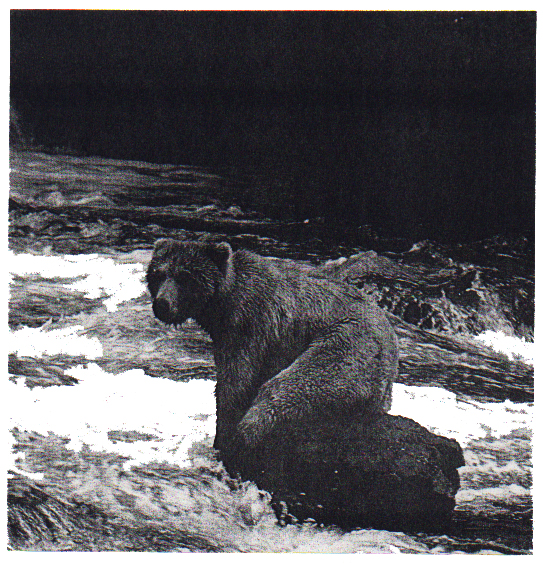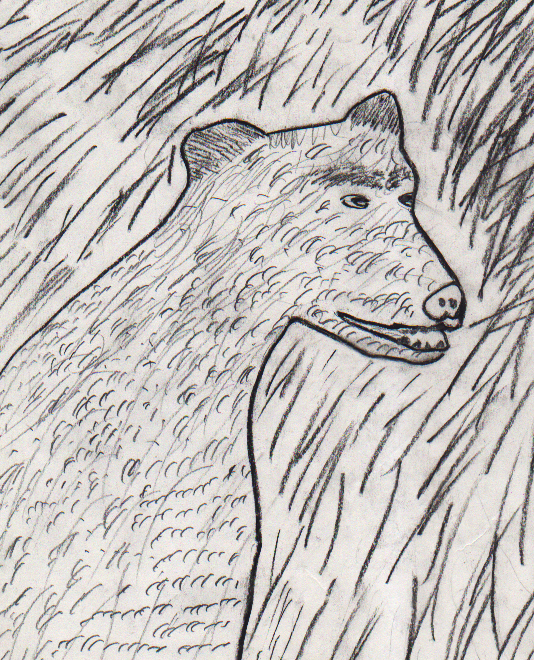 This collection of student work is from Frank Keim's classes. He wants to share these works for others to use as an example of culturally-based curriculum and documentation. These documents have been OCR-scanned and are available for educational use only.
This collection of student work is from Frank Keim's classes. He wants to share these works for others to use as an example of culturally-based curriculum and documentation. These documents have been OCR-scanned and are available for educational use only.Special | A | B | C | D | E | F | G | H | I | J | K | L | M | N | O
P | Q | R | S | T | U | V | W | X | Y | Z | ALL
Grizzly Bear by Billy Waska:
Grizzly Bear
The Grizzly Bear The Grizzly bear is stout and rather chunky in shape, with a large hump of fat and muscle over the shoulders. It has very long claws. People describe it as being somewhat "dish-faced" in appearance. Grizzlies eat a lot of salmon, and when salmon are especially numerous, they might eat just their favorite portions of the fish. These bears often catch and eat up to twenty salmon in an hour. Because of this, a bear could gain up to 6 pounds of fat in a 24 hour period. Although their diet is mostly plant material, they eagerly seek out animal matter because its food value is much more concentrated. Grizzly bears spend the winter hibernating in their dens. Depending on the size of the bear, a sleeping chamber can measure over 7 feet wide and 3 feet high. Some dens have been used for centuries by numerous generations of bears. Grizzlies begin to hibernate in the middle of September. Grizzlies may live longer than thirty years and can reproduce for most of their lives. One female kept at the Leipzig Zoo was still having cubs when she was twenty-six years old. Females generally don't breed until they are at least five years old. The breeding occurs in June or July. The bears give birth about 222 to 229 days after copulation. The actual fetal growth takes only about sixty days. A newborn Grizzly bear may weigh less than one pound, but nursing cubs gain weight quickly because bear milk contains as much as 33 percent fat . The cubs may increase their weight as much as 1,000 times. The sow bear will fiercely defend them from potential harm. Their deaths are frequently due to encounters with adult males, called boars. Wolves also sometimes prey on young Grizzly bear cubs. The term "Grizzly" is a colloquial name that refers to the animal's coloration. It means "grey-like." Most adult Grizzlies range from 350 to 700 pounds, rarely going over 1000 pounds. The Grizzly's reputation for ferociousness toward people makes the animal seem much larger. Ninety percent of North America's estimated 40,000 bears are found in Alaska, the Yukon ,the Rocky Mountains of Alberta and British Columbia, and in the mainland Northwest Territories. Less than 800 bears still exist in the continental United States. Grizzlies have suffered from both destruction of wildlands and the belief that they are dangerous to cattle, sheep and humans. There are, however, some attempts to protect them in their remaining habitats. Billy Waska
| |
|





